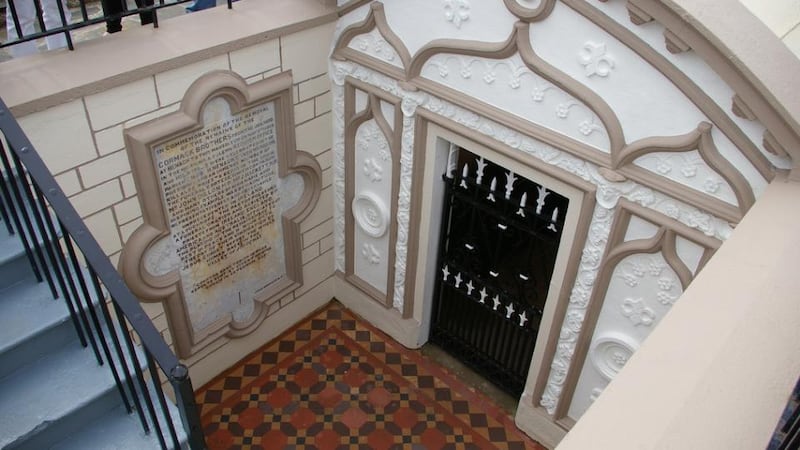Every Irish village has a compelling back-story – often told around one moment in local history that has defined the area for generations.
Few villages, however, have had the foresight to go in search of a writer and director willing to make a feature-length film about it.
But then, few true stories have the right mix of ingredients to seduce a film company – love and hate; privilege and desolation; local and national politics; corruption, mystery and, perhaps not insignificantly, a guilty conscience that forces a key witness to recant, albeit too late to save two lives.

On May 11th, 1858, two young men from the small parish of Loughmore in Co Tipperary were hanged on a scaffold erected in front of Nenagh jail.
The previous October, a land agent named John Ellis was shot dead and, while the Scotsman had the same number of enemies as he had Irish tenants, the Cormack brothers – Daniel (18) and William (23) – were considered the most likely suspects; an added motive being rumours of Ellis' unwelcome advances on their sister, Kitty.
Justice was swift and blind – oblivious, in fact, to overt perjury inside the court and palpable outrage outside.
Buried near where they fell, it was half a century before a local committee succeeded in bringing their bodies home to Loughmore.
In May 11th, 1910, the funeral procession from Nenagh to Loughmore – a distance of 24 miles – was reported as being in the tens of thousands.
It was a massive show of defiance of British rule, and served – as it did in 1858, the year James Stephens founded the Irish Republican Brotherhood – as a powerful propaganda boost for the nationalist movement.
One of the speakers in the village was John Dillon MP, and this paper also reported that the man who cut down the brothers from the scaffold and buried them 52 years earlier, Matt McGrath, was in attendance.
The story has now been brought to life as The Cormack Brothers.
Director Alan Brown got involved with the project when he was approached by residents of Loughmore after a screening of his film The Minnitts of Anabeg [his 2013 film set in 19th century Ireland, featuring Patrick Bergin].
“I took the Minnitts to America to screen in various Irish American centres and theatres and it was well received, but they were equally engrossed by the story of the Cormacks.
“It is a mix of a courtroom drama and the struggle to break free from British rule. It must have been a horrific time for the brothers, but what was their legacy? Would they have known that we are still talking about them 150 years on, that it was an event that highlighted the cruelty of British rule.”
With a mix of professional actors, mainly drawn from Dublin, and a number from the local Tipperary community, filming – by Krown Films – took place last year, with the cast and crew screening taking place in Tipperary last week.
“We were generously offered local locations, original to the story,” says Brown. “There is no doubt this wouldn’t have been made without the local support.”
But then, as industrious villages go, the residents of the small Tipperary parish must rank amongst the most energetic. Home to the recent winner of The Irish Times Best Cafe of 2014, what caught the attention of the judges was that The Cottage was a unique co-operative, with the local community being shareholders and participants. Rather than stamping feet in disgust at the seemingly endless erosion of rural communities, the natives used their feet to harness the power of the locality.
It's a resilience that may also hint at why a sparsely populated rural area has contested all four of the Tipperary senior football and hurling championship finals in the past two seasons – winning three.
It’s all the clichéd local spirit which has helped to produce a feature-length film, which is showing in various Tipperary locations this month.












